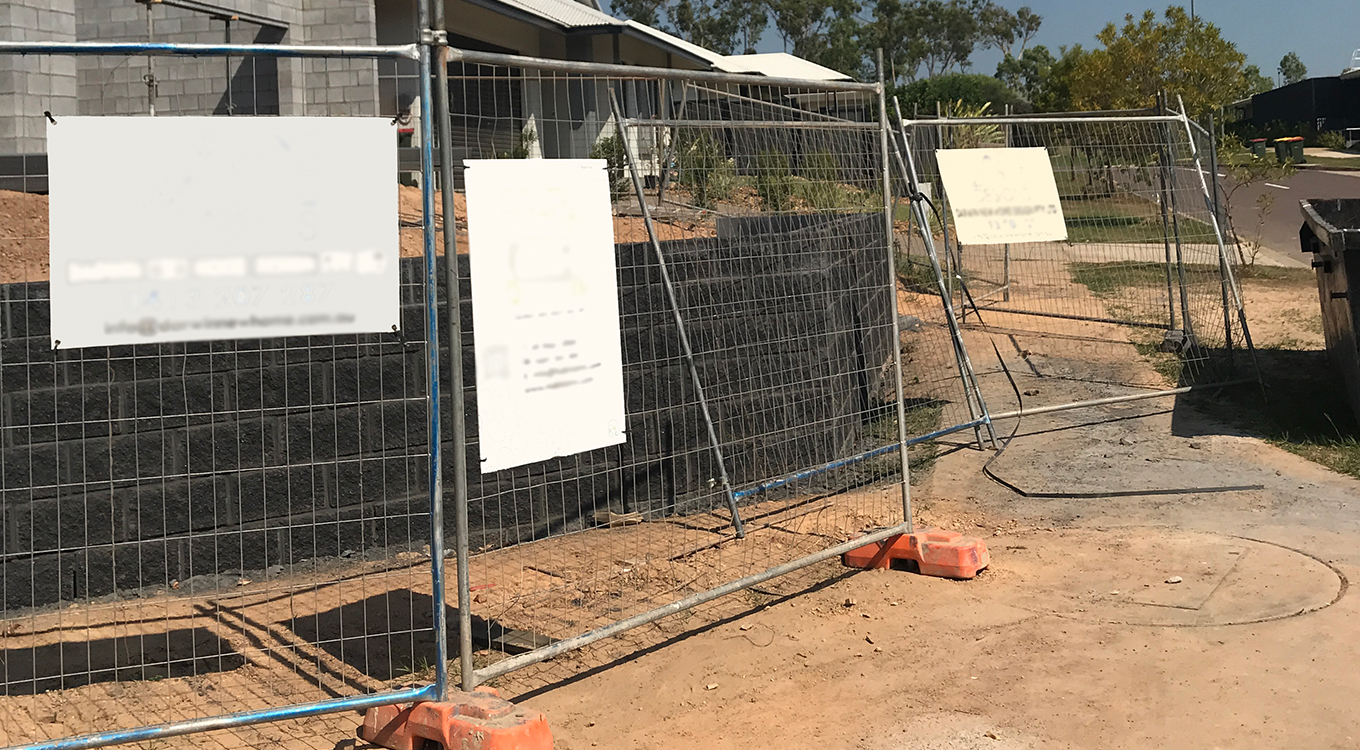Securing residential construction sites from unauthorised access
The purpose of this Safety Alert is to highlight the dangers of unauthorised people accessing residential construction and demolition sites and to urge the persons with management or control of these sites to secure the sites to prevent such unauthorised access.
Background
NT WorkSafe has received a number of notifications regarding unauthorised access to building sites including sites where construction activity has stopped for a long period of time, but the building is not yet complete. Unauthorised visitors (especially children) accessing a residential construction site are not familiar with the hazards onsite that may expose them to a serious risk to health and safety.
Separately, NT WorkSafe Inspector’s conducting site visits have encountered issues with site security involving the use of temporary fencing to prevent unauthorised access to residential construction sites. Some of the issues, which have made the fencing inadequate include:
- Fence panels installed without base support or with base supports incorrectly positioned;
- Fence panels installed without brackets to secure the panels together;
- Fencing only enclosing a portion of the building site and not the entire area; and
- Large sections of fencing erected without correct bracing, as recommended by the fence manufacturer.

Requirement to secure building site
Regulation 298 of the Work Health and Safety (National Uniform Legislation) Regulations 2011 requires the persons with management or control of a building site (i.e. builder, developer or owner of the site), to secure the site from unauthorised access (so far as is reasonably practicable). If unauthorised access cannot be prevented, the persons with management or control of the site must consider how to eliminate the risk of hazards at that site, in particular preventing the risk of falls from multi-level structures.
Action required
- Encourage your workers to secure the site or their work area against unauthorised access prior to leaving the site, especially if hazards are present (i.e. securing tools, chemicals and machinery as well as covering and securing open excavations, voids and skip bins).
- If the site is in an area where children could be (i.e. near a school, park or playground), installing a security fence should be considered if hazards cannot be removed or secured against unauthorised access.
- If a temporary fence is used, the temporary fence should:
- be difficult to gain access under the fence and to scale the fence;
- be able to withstand the anticipated loads to which it may be subjected, such as wind forces, persons attempting to scale; and
- Installed on firm and even ground.
- If the fence is made up of separate panels, the joints should not weaken it (i.e. all clamps in place) and should provide the same level of security as the panels.
- Gates in the fence should not be a weak point and the closed gate should provide the same level of security.
- Ensure the fence is installed in accordance with the designers, manufacturers and supplier’s instructions and specifications.
- When workers are onsite and construction work is being carried out, the fence can be left unlocked or incomplete to ensure safe entry and exit. The site must be secured when the workers leave and the site is unattended.
- If the fence is not effective in preventing unauthorised access, further measures should be taken to eliminate risks beyond the fence.
Further information
For further information, please refer to the following:
Legislation
Codes of Practice
Australian Standards
- AS 4687-2007 Temporary fencing and hoardings (SAI Global)